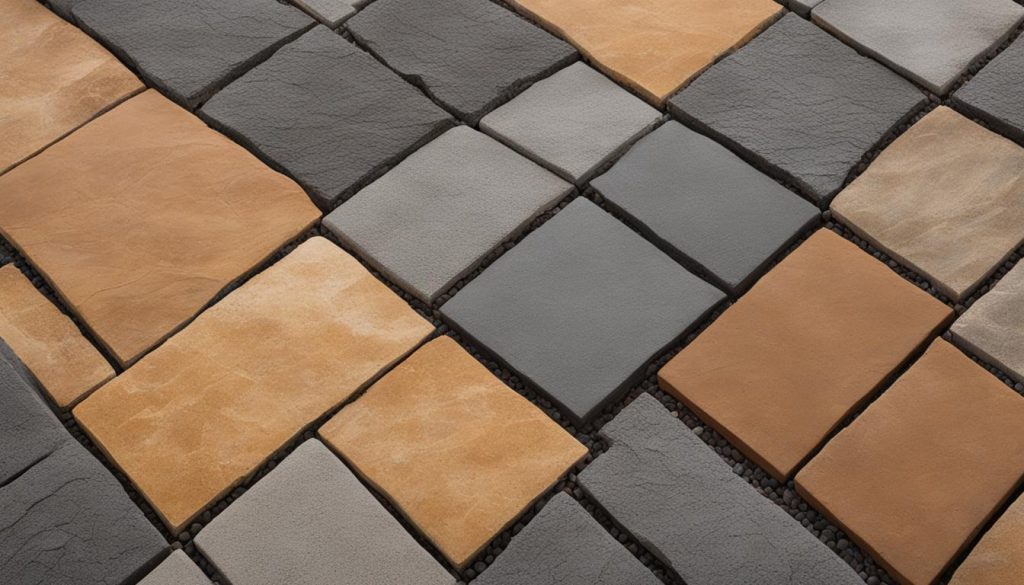Welcome to our article exploring the differences between two of the most popular materials for interlocking projects: stone and concrete. As Canada’s diverse climate and landscape require robust and visually appealing outdoor spaces, it is crucial to choose the right material for your projects. We are here to help you make an informed decision.
Interlocking stone and concrete have different advantages and considerations. While stone offers a natural and timeless aesthetic, concrete provides versatility and durability. Understanding how each material performs in Canada’s climate is essential to making the right choice.
Throughout this article, we will provide insights into the design possibilities, installation process, and maintenance requirements of interlocking stone and concrete. We will also examine how each material holds up in different climate conditions and regions across Canada.
By the end of this article, you will have a clear understanding of the factors to consider when choosing between interlocking stone and concrete, and you will be able to unleash your creativity to design a visually stunning outdoor space.
Interlocking Stone: A Timeless and Natural Choice
At Interlocking Contractor, we believe that interlocking stone is a natural choice for anyone looking to enhance the beauty of their outdoor space. It offers a timeless and elegant look that blends seamlessly with Canada’s diverse landscape. There are several types of interlocking stone available, each with unique characteristics to suit your personal style and needs.
Types of Interlocking Stone
Flagstone, cobblestone, and pavers are the most common types of interlocking stone used for landscaping. Flagstone is a flat stone that brings a rustic feel to any patio or walkway. It is available in various sizes and shapes, making it easy to install in any pattern. Cobblestone is another classic choice, with its rough, irregular edges that create a charming, old-world look. Pavers are a versatile option, with their clean, uniform appearance that complements modern designs.
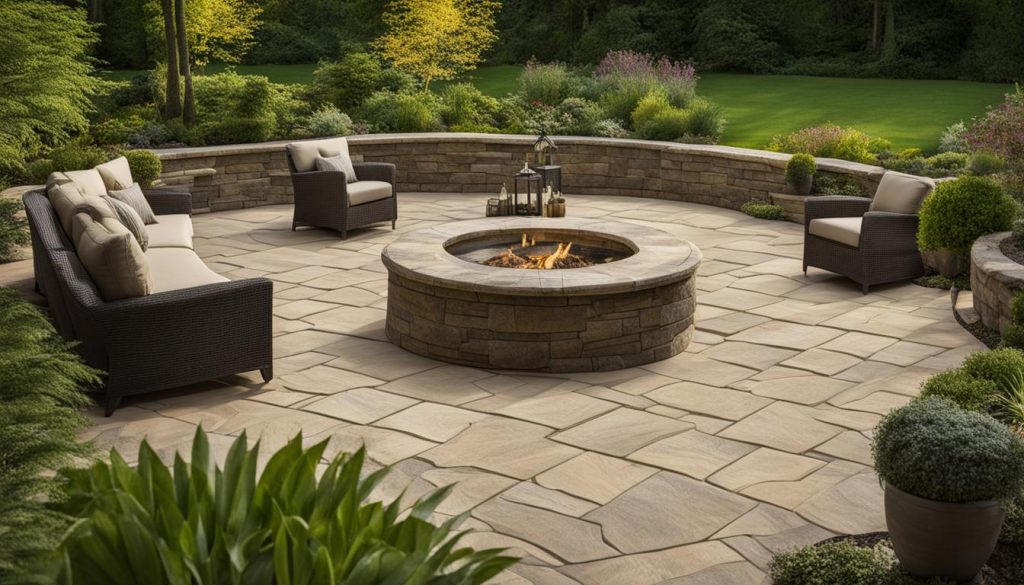
Advantages and Considerations
Interlocking stone is a durable and long-lasting material that requires minimal maintenance. Its natural colors and textures add character and depth to any outdoor space. However, it can be challenging to install and level, requiring the expertise of a professional interlocking contractor. It can also be more expensive than other materials, such as concrete.
At Interlocking Contractor, we have the experience and skills necessary to handle any interlocking stone project, from installation to repair and maintenance. Contact us today to learn more about how we can help you create the outdoor space of your dreams.
Concrete: Versatility and Durability Combined
Concrete is a highly versatile and durable material that is widely used in various landscaping projects. Its durability makes it an ideal material for driveways, patios, and walkways, as it can withstand heavy foot traffic and exposure to the elements without sustaining damage.
One advantage of using concrete for interlocking projects is its flexibility in design. Concrete can be shaped into various sizes and shapes, making it easy to create unique patterns and designs. It can also be colored or stained to match the style of your home or outdoor space, enhancing its aesthetic appeal.
Concrete interlocking products are available in two main types: pavers and slabs. Concrete pavers are smaller units that can be arranged in various patterns, making them ideal for creating intricate designs. Concrete slabs, on the other hand, are larger and offer a more uniform look.
Durability
The durability of concrete makes it a popular choice for outdoor projects in Canada. Its resistance to extreme weather conditions, including freeze-thaw cycles, makes it a reliable option for all seasons.
Concrete is also highly resistant to water damage, as it does not absorb moisture easily. This makes it ideal for use in areas with heavy precipitation or areas prone to flooding.
Versatility
Concrete’s versatility is another reason why it’s a popular choice for interlocking projects. Concrete can be used in a wide range of landscaping projects, including walkways, patios, and driveways.
Concrete’s flexibility in design also allows for various patterns, shapes, and colors, making it easy to match the style of your home or the surrounding landscape. It can be used to create a modern or traditional look, depending on your preference.
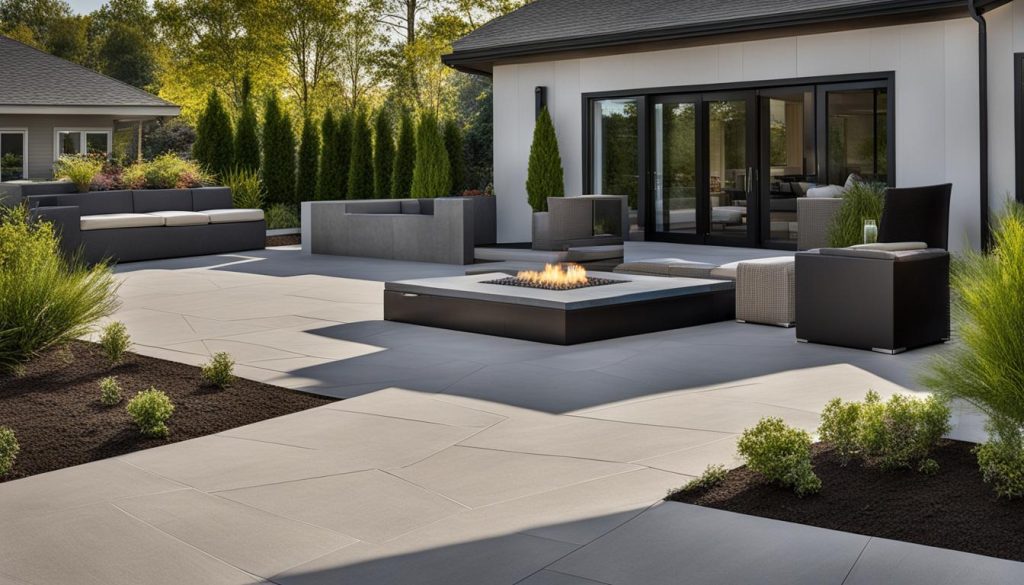
Considerations
While concrete is a durable and versatile material, it does have a few considerations to keep in mind. Concrete tends to be more expensive than other interlocking materials, making it less accessible for those on a budget. However, the long-term durability and versatility of concrete may make it a better investment in the long run.
Concrete also requires proper installation and maintenance to ensure its longevity. A professional interlocking contractor should be hired to ensure that the base is properly constructed, and the concrete is installed correctly.
In conclusion, concrete is a highly versatile and durable material that offers a wide range of design possibilities for your interlocking projects. Its flexibility in design and resistance to extreme weather make it a reliable choice for all seasons. While it may be more expensive and require proper installation and maintenance, the long-term benefits may make it a better investment in the long run.
Climate Considerations: How Interlocking Materials Hold Up
Canada’s climate is diverse, and it is crucial to consider how interlocking materials will hold up in different regions. Both interlocking stone and concrete have their advantages and disadvantages in extreme temperatures, freeze-thaw cycles, and heavy precipitation. Understanding these differences will help you make an informed decision on the best material for your project.
Interlocking Stone
Interlocking stone is a natural material that has been used for centuries in landscaping projects. It offers a timeless look that can enhance the beauty of any outdoor space. However, its natural qualities can make it susceptible to weathering in certain climates.
In areas with high levels of precipitation, such as the west coast, interlocking stone can become slippery and dangerous when wet. In colder climates, such as the prairies, freeze-thaw cycles can cause the stone to heave and shift, potentially creating tripping hazards. Regular maintenance, such as sealing and cleaning, can help prevent these issues.
One advantage of interlocking stone is its ability to absorb and retain heat, making it an excellent choice for outdoor living areas. It can also withstand high traffic and heavy loads, making it suitable for driveways and pathways.
Concrete
Concrete is a versatile and durable material that has become increasingly popular for interlocking projects. It is resistant to weathering and erosion, making it a good choice for areas with heavy precipitation or extreme temperatures.
In cold climates, concrete can crack due to freeze-thaw cycles, but proper installation techniques and maintenance can minimize this risk. In addition, the use of de-icing agents can also cause damage to the material over time.
Concrete offers a wide range of design possibilities, including various colors, textures, and patterns. It is also a cost-effective option, making it an attractive choice for large-scale projects.
Comparing Interlocking Stone and Concrete
When considering interlocking stone versus concrete, it’s essential to weigh the benefits and drawbacks of each material. In summary:
| Interlocking Stone | Concrete |
|---|---|
| Natural look and timeless aesthetic | Wide range of design possibilities and cost-effective |
| Can become slippery and heave in certain climates | Resistant to weathering and erosion |
| Requires regular maintenance | May crack due to freeze-thaw cycles |
| Can absorb and retain heat | Suitable for high traffic and heavy loads |
Overall, the choice between interlocking stone and concrete will depend on your personal style, budget, and the climate in your area. At Interlocking Contractor, we can help you navigate these choices and make the best decision for your project.
Design Possibilities: Unleash Your Creativity
When it comes to designing your outdoor space, the possibilities are endless with interlocking stone and concrete. You can create a wide range of patterns, colors, and textures that can be tailored to your personal style and taste.
Interlocking stone provides a natural feel and can be used to create a rustic or modern look, depending on the type of stone you choose. Flagstone, for example, is a popular choice for creating a natural-looking pathway or retaining wall. Cobblestone, on the other hand, can provide a charming old-world feel. Pavers are incredibly versatile and can be used to create intricate designs or simple and elegant pathways.
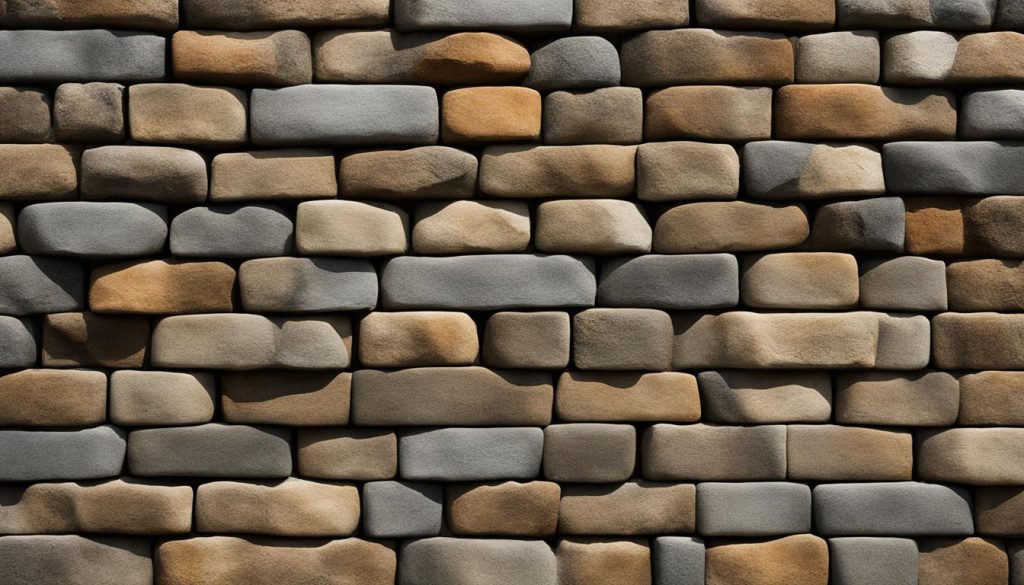
Concrete is equally versatile, and its durability makes it ideal for high-traffic areas. With concrete, you can create a variety of patterns, from intricate geometric designs to classic brick patterns. Concrete pavers can be molded to look like natural stone or have a smooth, modern finish that complements a contemporary style.
The design possibilities are endless with both materials. Consider incorporating contrasting colors or adding unique elements such as mosaic patterns or inlaid stones to make your design stand out.
Installation Process: What to Expect
At Interlocking Contractor, we know that proper installation is essential to ensure the longevity and performance of your interlocking project. Here is what you can expect during the installation process:
- Planning: Before we begin, we will meet with you to discuss your vision for your outdoor space. We will measure the area and provide you with a detailed quote for the project.
- Preparation: We will prepare the site by removing any existing landscaping features and grading the area to ensure proper drainage.
- Base construction: The base layer is a vital aspect of the installation process. We will excavate the area and lay a base of crushed stone, which will ensure that the final product is level and stable.
- Laying techniques: With the base in place, we will begin laying the interlock stones or concrete pavers according to the design you have chosen. We will make sure that the stones are closely aligned and level to ensure maximum stability.
- Finishing touches: Once the interlocking is complete, we will compact the stones and add polymeric sand to the joints. We will also clean the area and take away any construction waste, so your outdoor space is ready to use.
Overall, the installation process can take between 3-5 days, depending on the size and complexity of the project. Our team of professional installers will work efficiently and safely to ensure that you are satisfied with the end result.
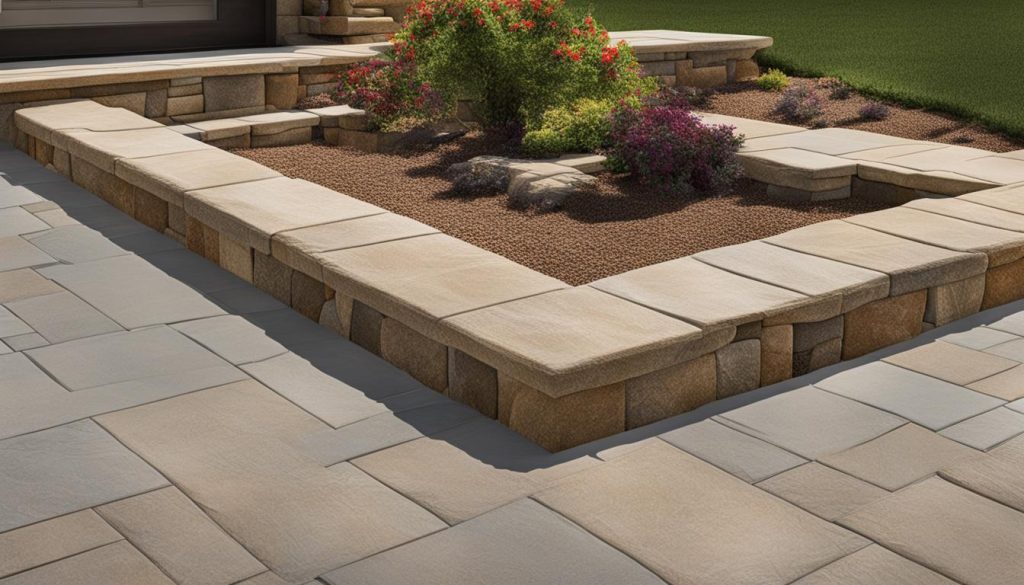
Making the Right Choice for Your Project
Choosing between interlocking stone and concrete for your landscaping project can be a tough decision. But now that you have all the information on the pros and cons of both materials, you’re one step closer to making the right choice.
Factors to consider when making your decision include your budget, personal style, and the climate in your area. Interlocking stone is a great choice if you’re looking for a natural and timeless aesthetic. It’s available in various types, including flagstone, cobblestone, and pavers, allowing for endless design possibilities. On the other hand, if you’re looking for versatility and durability, concrete is the way to go. It’s also available in different types, including pavers and slabs, and can withstand extreme weather conditions.
It’s important to note that both materials require proper maintenance to ensure their longevity and appearance. Depending on the climate in your area, one material may require more upkeep than the other. For example, in areas with heavy precipitation, interlocking stone may be prone to shifting, while concrete may crack in areas with extreme temperature fluctuations.
At Interlocking Contractor, we understand that every project is unique. That’s why we offer personalized advice and assistance to help you make the right choice for your project. Our team of experienced professionals can guide you through the installation process, ensuring a successful and long-lasting outcome.
Get in Touch with Us Today
If you’re still unsure about which material to choose, don’t hesitate to contact us. We’re here to help you every step of the way, from choosing the right material to installation and maintenance. Making the right choice for your project has never been easier.
FAQ
What are the differences between interlocking stone and concrete?
Interlocking stone is a natural choice that offers a timeless aesthetic, while concrete is known for its versatility and durability. Interlocking stone has a more natural look and can be made from materials like flagstone, cobblestone, and pavers. Concrete, on the other hand, offers a wide range of design possibilities and can be used in various weather conditions.
How do interlocking materials perform in Canada’s climate and landscape?
Both interlocking stone and concrete are designed to withstand Canada’s diverse climate. They can hold up against extreme temperatures, freeze-thaw cycles, and heavy precipitation. However, it’s essential to consider the specific maintenance requirements of each material to ensure their longevity in different climate conditions.
What design possibilities do interlocking stone and concrete offer?
Both interlocking stone and concrete provide a plethora of design possibilities. With interlocking stone, you can choose from various patterns, colors, and textures to create a unique and visually appealing landscape. Concrete also offers versatility in design, allowing you to create different shapes and finishes to suit your personal style.
What is the installation process for interlocking stone and concrete?
Installing interlocking stone or concrete involves careful planning and execution. The process includes preparation, base construction, and laying techniques. It is crucial to hire a professional interlocking contractor who can ensure a successful and long-lasting installation.
How do I make the right choice between interlocking stone and concrete for my project?
To make an informed decision, consider factors such as the desired aesthetic, climate conditions in your area, and the level of maintenance you are willing to commit to. We, at Interlocking Contractor, can provide personalized advice and assistance to help you make the right choice for your specific project. Reach out to us with your questions or concerns.

